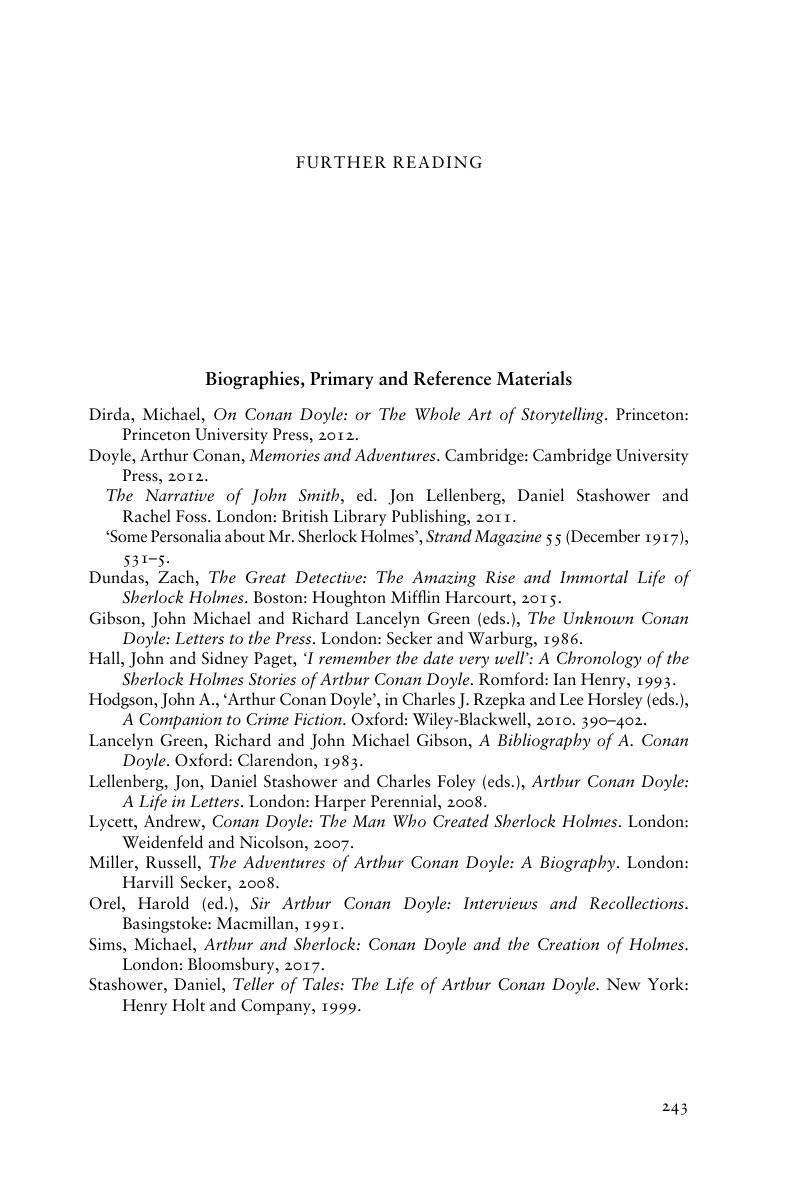Book contents
- The Cambridge Companion to Sherlock Holmes
- The Cambridge Companion to Sherlock Holmes
- Copyright page
- Contents
- Illustrations
- Notes on Contributors
- Acknowledgements
- Textual Note
- Chronology
- 1 Introduction
- Part I Contexts
- Part II Case Studies
- Part III Holmesian Afterlives
- Further Reading
- Index
- Cambridge Companions To Literature
- References
Further Reading
Published online by Cambridge University Press: 29 April 2019
- The Cambridge Companion to Sherlock Holmes
- The Cambridge Companion to Sherlock Holmes
- Copyright page
- Contents
- Illustrations
- Notes on Contributors
- Acknowledgements
- Textual Note
- Chronology
- 1 Introduction
- Part I Contexts
- Part II Case Studies
- Part III Holmesian Afterlives
- Further Reading
- Index
- Cambridge Companions To Literature
- References
Summary

- Type
- Chapter
- Information
- The Cambridge Companion to Sherlock Holmes , pp. 243 - 257Publisher: Cambridge University PressPrint publication year: 2019

